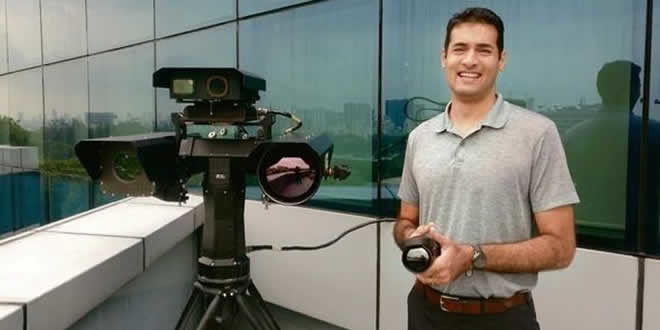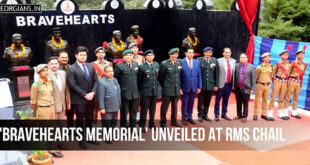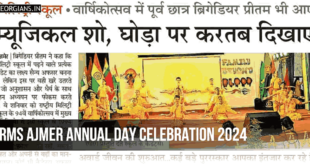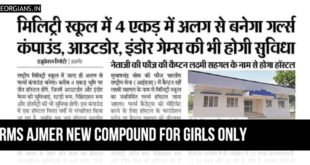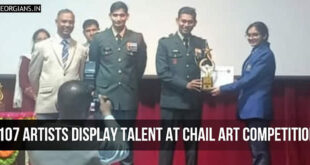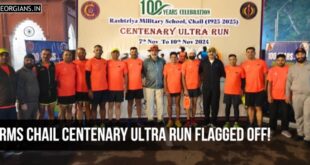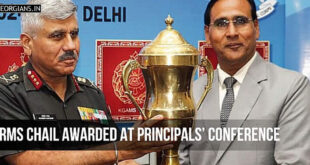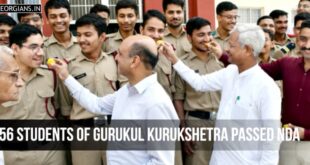Arvind Lakshmikumar, founder and CEO of Tonbo Imaging, had to sell his technology to US and Israeli forces before he could gain his home country’s trust
- Tonbo’s computer vision technology sits on seekers at the tips of precision missiles and lightweight thermal weapons
- Tonbo set up an R&D centre in Lithuania to develop autonomous vehicles, adding to its presence in India, US and Singapore
Armed with thermobaric rockets, grenade launchers and rifles fitted with infrared imaging systems, they hit six terrorist launchpads simultaneously and made it back without losing lives. All of this was captured live on camera by drones.
The operation was all over the media in India and Pakistan for months. Last year, partial footage was aired publicly. A dramatized account of the operation became a box-office hit in Uri: The Surgical Strike.
But what is little known outside army circles and the corridors of power is the role played by a Bengaluru startup in this operation. Tonbo Imaging built the night vision system that guided the surgical strikes.
Tonbo’s imaging sensors are the eyes of the soldiers, the artificial intelligence stack built into it is the brain that enables real-time decision-making and fire control. Infrared seekers guide weapons to lock on targets more than 1km away; smart cameras record the action and a secure, wireless communication system relays it back to base.
Now the army and defence ministry, and Northern Command in particular, are Tonbo’s clients but India was late to the party. The company’s tech took a circuitous route via the US Special Forces and Israeli Army before reaching Indian hands.
Tonbo got on the radar of the Indian Armed Forces only during a joint exercise with NATO eight years ago. Some of the weapons the US Army showcased had Tonbo smarts.
“This came from an engineering centre in Bengaluru, they told the Indians. That’s when the army reached out to us. Five countries were buying our tech before India bought from us,” recalls Arvind Lakshmikumar, founder and CEO of Tonbo Imaging. That it took so long to gain his home country’s trust is the only low point Lakshmikumar can think of in his entrepreneurial journey so far.
Tonbo Imaging now sells to defence forces in 25 countries, from emerging markets to the highest end of the spectrum—Israel and the US. It sells imaging and tracking systems to Rafael Advanced Defense Systems and Israel Aerospace Industries, which in turn sell smart weapons fitted with these systems to armies around the world. Besides armies, defence behemoths like Excelitas and Beretta buy its systems and software. Its tech sits on seekers on the tips of precision missiles, lightweight thermal weapons and day-and-night scopes to track enemies.
The startup recently set up an R&D centre in Lithuania to develop autonomous vehicles, adding to its presence in India, Singapore and the US. The startup has raised over ₹200 crore in funding, showing that venture capital investors too are buying into Tonbo’s vision.
The battle ground
Every country wants artificial intelligence, machine learning and advanced sensing to fortify defence, spot threats before time, and crush them with precision. But very few countries have such muscle.
The US, Israel and China have the most advanced defence tech but want to keep their strategic edge. India—the world’s fourth largest military spender—and other developing countries mostly buy outdated weaponry, a few generations behind.
Apart from denial of access to new-age weaponry, India’s defence procurement process is skewed towards quantity instead of quality. Contracts go to the lowest bidder, and at least 10 firms have to make bids—but bleeding-edge technology, like see-through armour, only has one or two providers.
“Ten and more bidders will participate if you want potatoes or onions, not when you are shopping for truly high-tech weapon systems. Then maybe three can bid, of which two might say, sorry I can’t sell to you because you’re India. Then you’re left with one,” points out Lakshmikumar.
His foray into defence tech happened well before Tonbo, back when he was doing PhD work at the Robotics Institute of Carnegie Mellon University in the US. With his doctoral adviser Takeo Kanade—one of the founding fathers of computer vision—he worked on an early program to build video surveillance for the information exploitation office of DARPA (Defense Advanced Research Projects Agency) in 2000.
Lakshmikumar returned to India in 2003 to head Sarnoff Technologies, a subsidiary of Sarnoff Corp. owned by Stanford Research Institute. Sarnoff had 600 employees, almost all with PhDs, and worked on imaging systems for the US defence. But it had no commercial bent of mind and wound up its India operations by 2007. Lakshmikumar bought the India entity with a partner and spun out a new company named Serial Innovations, which became Tonbo Imaging in 2012.
Eyes and brains for arms
Tonbo is dragonfly in Japanese. A dragonfly has compound eyes with 30,000 facets in each producing a mosaic of pictures and colours along with a brain designed to make sense of all it sees. That idea represents what Tonbo Imaging does. It combines multiple-sensor image acquisition with computing for real-time interpretation. The name is also a tribute to Kanade, Lakshmikumar’s Japanese doctoral adviser who is now on the company’s advisory board.
Lakshmikumar’s choice of the defence sector to apply his expertize in computer vision traces back to his roots. He studied in Bengaluru’s Rashtriya Military School where most students came from defence homes. So he had a ringside view into the lives of soldiers early on.
India is the world’s second-largest importer of defence equipment, after Saudi Arabia, and yet soldiers on the field lack night-vision goggles, GPS watches, or good shoes—there are gaping holes begging to be filled. “I have examples of senior army officers who saw an immediate need for some weapon system, bought it out of their own pocket, and used it before getting refunded by the government,” says Lakshmikumar.
Computer vision technology has become a significant component of any defence procurement in emerging markets like India. “For any developing country trying to modernize its defence with sophisticated weapons, whether it’s a tank or a rifle, 30% of its value would be in the computer vision equipment,” he says.
The startup uses contract manufacturing to make these widely available at affordable price points.
Tonbo Imaging is currently upgrading imaging systems for the Jordanian army, a bid it won against established defence firms like Thales from Europe. “Being invited to the same table as companies with market capitalization in billions and seeing your product chosen—that’s definitely a high point,” says Lakshmikumar.
 Georgians Rashtriya Military Schools
Georgians Rashtriya Military Schools
